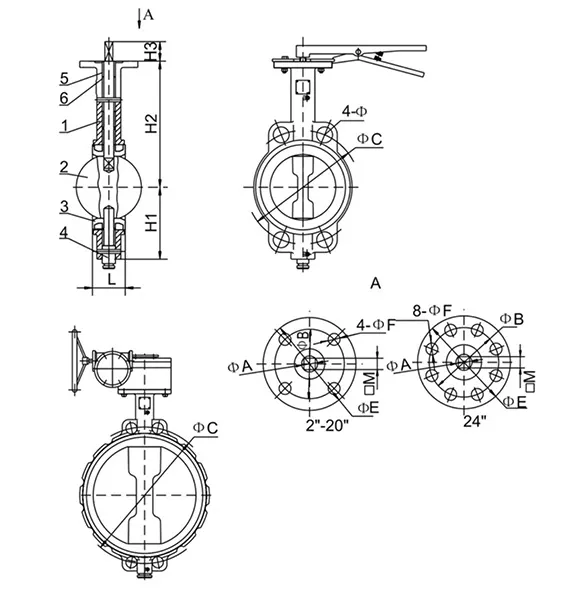9 月 . 15, 2024 10:20 Back to list
Durable Cast Steel Check Valves for Reliable Flow Control
Understanding Cast Steel Check Valves Functionality and Applications
Cast steel check valves are essential components in various industrial applications, ensuring the proper flow of fluids by allowing them to pass in one direction while preventing backflow. These valves are particularly valued for their durability, strength, and versatility. In this article, we will explore the fundamental aspects of cast steel check valves, highlighting their design, functionality, and common applications.
Design Features
Cast steel check valves are typically manufactured from high-quality cast steel, which provides outstanding resistance to pressure and temperature fluctuations. The casting process allows for complex shapes and sizes, making these valves suitable for various pipeline configurations. The design typically includes a body, a disc (or ball), and a seat. The disc moves in response to the flow of fluid; when the flow is strong enough, it lifts off the seat, allowing fluid to pass through. If there is a reduction in flow or a reverse flow, the disc returns to its seat, effectively sealing the valve and preventing backflow.
The most common designs of cast steel check valves are the swing check valve and the lift check valve. Swing check valves have a disc that swings open and closed, while lift check valves utilize a disc that lifts vertically. Each design has its specific applications and advantages, depending on the fluid dynamics and system requirements.
Functionality
The primary function of a check valve is to maintain unidirectional flow and protect equipment from potentially damaging backflows. In many systems, the presence of backflow can lead to pressure surges, contamination of fluids, and possible damage to pumps and other machinery. By incorporating cast steel check valves into a system, operators can effectively manage and control fluid flow, ensuring the safety and longevity of their equipment.
cast steel check valve

In addition to backflow prevention, cast steel check valves can accommodate a wide range of pressures and temperatures, making them suitable for use in high-stress environments, such as oil and gas pipelines, chemical processing plants, and power generation facilities. Their robust construction ensures reliability even in extreme conditions.
Applications
Cast steel check valves find applications across various industries due to their reliability and strength. In the oil and gas sector, they are commonly used in downstream operations, refinery systems, and transport pipelines to safeguard against fluid reversal. Similarly, in the water and wastewater treatment fields, these valves help maintain system integrity by preventing backflow that could lead to contamination.
In the chemical industry, check valves are crucial for maintaining the integrity of various chemical processes, where the cross-contamination of substances can be detrimental. Moreover, in power plants, they are employed to ensure proper flow in boiler feedwater systems, cooling water lines, and steam systems.
Conclusion
Cast steel check valves are integral components in many fluid handling systems, providing essential protection against backflow and facilitating the safe operation of various industrial processes. Their robust design and ability to function under extreme conditions make them a preferred choice in critical applications. As industries continue to evolve, the demand for high-quality cast steel check valves will undoubtedly increase, highlighting their significance in modern engineering and technology. Understanding their functionality and applications can help engineers and operators make informed decisions when selecting the right valve for their systems.
Share
-
Understanding the Differences Between Wafer Type Butterfly Valve and Lugged Butterfly ValveNewsOct.25,2024
-
The Efficiency of Wafer Type Butterfly Valve and Lugged Butterfly ValveNewsOct.25,2024
-
The Ultimate Guide to Industrial Swing Check Valve: Performance, Installation, and MaintenanceNewsOct.25,2024
-
Superior Performance with Industrial Swing Check Valve: The Essential Valve for Any SystemNewsOct.25,2024
-
Industrial Swing Check Valve: The Ideal Solution for Flow ControlNewsOct.25,2024
-
You Need to Know About Industrial Swing Check Valve: Functionality, Scope, and PerformanceNewsOct.25,2024